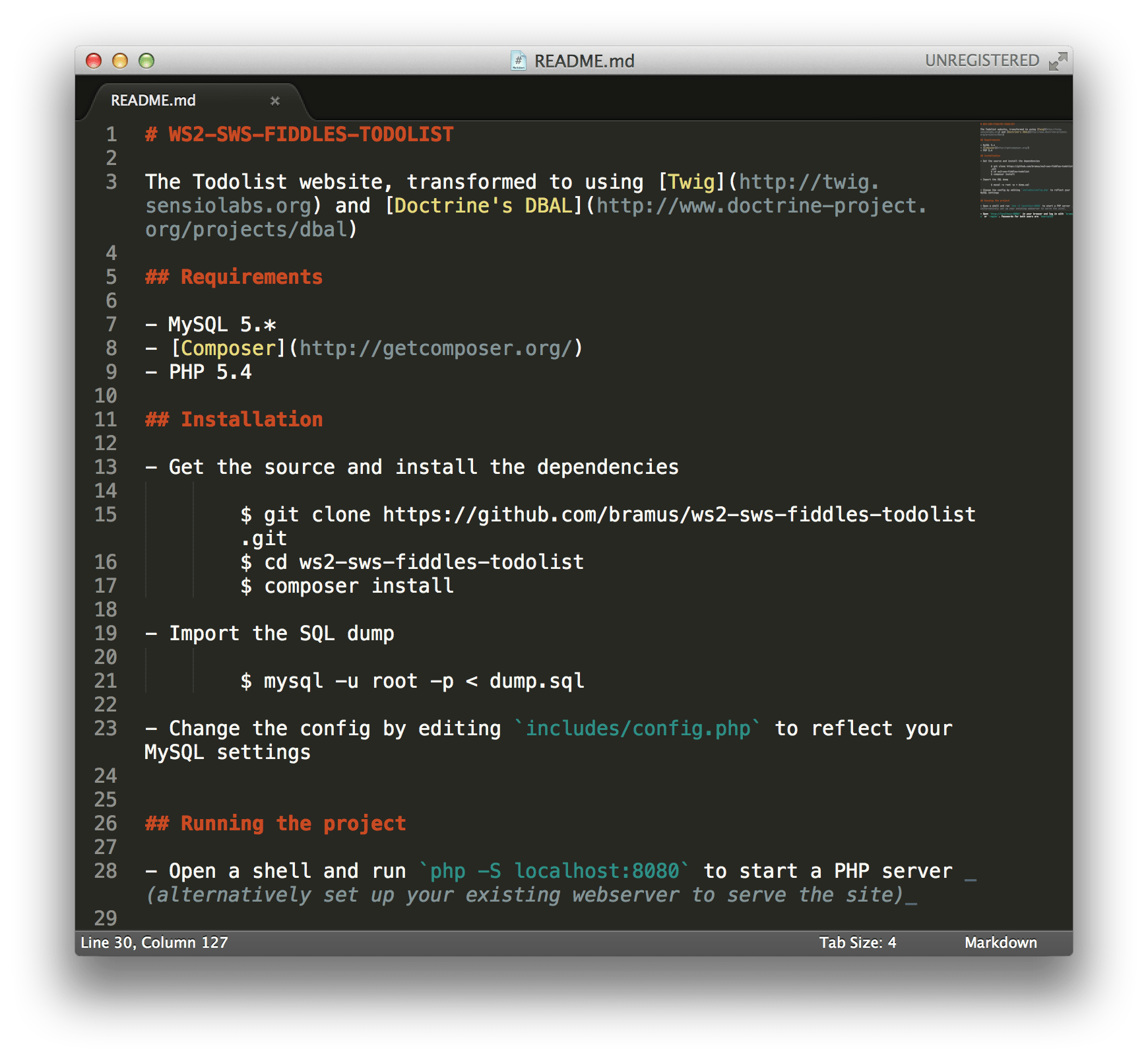- Markdown And Markup Calculator
- Markup And Markdown 7th Grade
- Markdown And Markup Formula
- Markups And Markdowns Quizlet
- Markup And Markdown Practice
CommonMark and a few other lightweight markup languages let you type a backslash ( ) at the end of the line, but not all Markdown applications support this, so it isn’t a great option from a compatibility perspective. And at least a couple lightweight markup languages don’t require anything at the end of the line — just type return. See also: mark-up and mark up. You can display the icon on any site you offer your software for download using the following markup. Read through our Markdown kramdown Style Guide!
If you need to convert files from one markup format into another, pandoc is your swiss-army knife. Pandoc can convert between the following formats:
(← = conversion from; → = conversion to; ↔︎ = conversion from and to)
↔︎ Markdown (including CommonMark and GitHub-flavored Markdown)
↔︎ reStructuredText
→ AsciiDoc
↔︎ Emacs Org-Mode
↔︎ Emacs Muse
↔︎ Textile
← txt2tags

↔︎ (X)HTML 4
↔︎ HTML5
↔︎ EPUB version 2 or 3
↔︎ FictionBook2
→ GNU TexInfo
↔︎ Haddock markup
↔︎ roff man
→ roff ms
↔︎ LaTeX
→ ConTeXt
↔︎ DocBook version 4 or 5
↔︎ JATS
→ TEI Simple
↔︎ OPML
↔︎ BibTeX
↔︎ BibLaTeX
↔︎ CSL JSON
↔︎ CSL YAML
↔︎ Microsoft Word docx
↔︎ OpenOffice/LibreOffice ODT
→ OpenDocument XML
→ Microsoft PowerPoint
↔︎ Jupyter notebook (ipynb)
→ InDesign ICML
↔︎ MediaWiki markup
↔︎ DokuWiki markup
← TikiWiki markup
← TWiki markup
← Vimwiki markup
→ XWiki markup
→ ZimWiki markup
↔︎ Jira wiki markup
→ LaTeX Beamer
→ Slidy
→ reveal.js
→ Slideous
→ S5
→ DZSlides
Markdown And Markup Calculator
← CSV tables
→ custom writers can be written in lua.
→ via pdflatex, lualatex, xelatex, latexmk, tectonic, wkhtmltopdf, weasyprint, prince, context, or pdfroff.
Pandoc understands a number of useful markdown syntax extensions, including document metadata (title, author, date); footnotes; tables; definition lists; superscript and subscript; strikeout; enhanced ordered lists (start number and numbering style are significant); running example lists; delimited code blocks with syntax highlighting; smart quotes, dashes, and ellipses; markdown inside HTML blocks; and inline LaTeX. If strict markdown compatibility is desired, all of these extensions can be turned off.
LaTeX math (and even macros) can be used in markdown documents. Several different methods of rendering math in HTML are provided, including MathJax and translation to MathML. LaTeX math is converted (as needed by the output format) to unicode, native Word equation objects, MathML, or roff eqn.
Pandoc includes a powerful system for automatic citations and bibliographies. This means that you can write a citation like
and pandoc will convert it into a properly formatted citation using any of hundreds of CSL styles (including footnote styles, numerical styles, and author-date styles), and add a properly formatted bibliography at the end of the document. The bibliographic data may be in BibTeX, BibLaTeX, CSL JSON, or CSL YAML format. Citations work in every output format.
There are many ways to customize pandoc to fit your needs, including a template system and a powerful system for writing filters.
Pandoc includes a Haskell library and a standalone command-line program. The library includes separate modules for each input and output format, so adding a new input or output format just requires adding a new module.
Pandoc is free software, released under the GPL. Copyright 2006–2020 John MacFarlane.
Markdown is a lightweight and easy-to-use syntax for styling all forms of writing on the GitHub platform.
What you will learn:
- How the Markdown format makes styled collaborative editing easy
- How Markdown differs from traditional formatting approaches
- How to use Markdown to format text
- How to leverage GitHub’s automatic Markdown rendering
- How to apply GitHub’s unique Markdown extensions
What is Markdown?
Markdown is a way to style text on the web. You control the display of the document; formatting words as bold or italic, adding images, and creating lists are just a few of the things we can do with Markdown. Mostly, Markdown is just regular text with a few non-alphabetic characters thrown in, like # or *.
Markup And Markdown 7th Grade
You can use Markdown most places around GitHub:
- Comments in Issues and Pull Requests
- Files with the
.mdor.markdownextension
For more information, see “Writing on GitHub” in the GitHub Help.
Examples
Syntax guide
Here’s an overview of Markdown syntax that you can use anywhere on GitHub.com or in your own text files.
Headers
Emphasis
Lists
Unordered
Ordered
Images
Links
Blockquotes
Markdown And Markup Formula
Inline code
GitHub Flavored Markdown
GitHub.com uses its own version of the Markdown syntax that provides an additional set of useful features, many of which make it easier to work with content on GitHub.com.
Note that some features of GitHub Flavored Markdown are only available in the descriptions and comments of Issues and Pull Requests. These include @mentions as well as references to SHA-1 hashes, Issues, and Pull Requests. Task Lists are also available in Gist comments and in Gist Markdown files.
Syntax highlighting
Here’s an example of how you can use syntax highlighting with GitHub Flavored Markdown:
You can also simply indent your code by four spaces:
Here’s an example of Python code without syntax highlighting:

Task Lists
If you include a task list in the first comment of an Issue, you will get a handy progress indicator in your issue list. It also works in Pull Requests!
Tables
You can create tables by assembling a list of words and dividing them with hyphens - (for the first row), and then separating each column with a pipe |:
Would become:
| First Header | Second Header |
|---|---|
| Content from cell 1 | Content from cell 2 |
| Content in the first column | Content in the second column |

SHA references
Any reference to a commit’s SHA-1 hash will be automatically converted into a link to that commit on GitHub.
Issue references within a repository
Any number that refers to an Issue or Pull Request will be automatically converted into a link.

Username @mentions
Typing an @ symbol, followed by a username, will notify that person to come and view the comment. This is called an “@mention”, because you’re mentioning the individual. You can also @mention teams within an organization.
Automatic linking for URLs
Any URL (like http://www.github.com/) will be automatically converted into a clickable link.
Strikethrough
Markups And Markdowns Quizlet
Any word wrapped with two tildes (like ~~this~~) will appear crossed out.
Emoji
GitHub supports emoji!
To see a list of every image we support, check out the Emoji Cheat Sheet.
Markup And Markdown Practice
Last updated Jan 15, 2014
